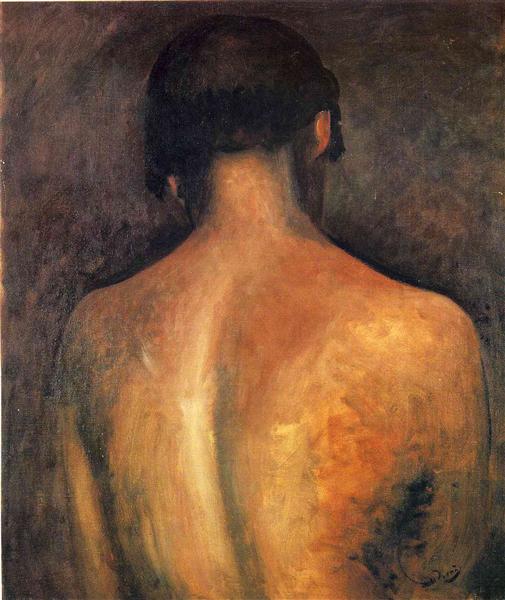Description
The work "Back" (original title in English: "Back") by André Derain is a captivating manifestation of Fauvism, a movement that is characterized by its vibrant use of color and its focus on emotional expression through painting. Created in 1906, this work is a remarkable example of Derain's bold style, who, together with other artists such as Henri Matisse, established new directions in the painting of the twentieth century.
In "back", we observe the representation of a human figure portrayed from an unusual perspective, suggesting a radically modern approach in the conception of the human body. The figure, which seems to be feminine, is presented on your back, which not only raises issues about identity and subjectivity, but also invites the viewer to consider the relationship between the observer and the observed. The choice to represent the figure in this way, stripping the work of the conventional narrative, suggests a game with intimacy and perception.
Derain uses an intense and contrasting palette that is characteristic of Fauvism. The background is composed of warm tones that mix and vibrate, while the central figure differs through a softer and more nuanced use of tones, which allows it to clearly rise in the composition. The lines are daring and sometimes they seem to give movement to the figure itself, communicating a feeling of energy that is almost palpable. This interaction between background and figure reveals Derain's ability to balance the shapes and colors without compromising artistic expression.
The loose and gestural brushstroke that Derain uses is another fundamental aspect of this work. The paths seem to be spontaneous, which adds a sensation of immediacy and naturalness to the composition. In this freedom of expression, there is the essence of Fauvism: the search for pure emotion in pictorial representation, above fidelity to reality. Derain manages to encapsulate a moment, a feeling that resonates beyond the simple description of the form.
The figure in "back" could evoke comparisons with other works by contemporary and subsequent artists who also explored the human figure from unconventional angles. For example, the exploration of the torso and the human form in the works of Pablo Picasso or the symbolism in the paintings Gustav Klimt reflects a similar search in the representation of the figure, although each artist had his own visual language. Derain's work is aligned in a continuous dialogue over the body in art, echoing changes in the artistic perception of the human figure.
At the context level, André Derain was one of the most prominent painters of his time, renamed for his ability to intertwine different influences and styles. His participation in Fauvism, symbolisms of impressionism and the subsequent influence of the expressionist currents, enrich not only their individual work but also the artistic panorama of the twentieth century. "Back" happens at a birth of a new era where beauty standards and the viewer's relationship with the work are redefined.
In conclusion, André Derain's "back" is a piece that not only catches the spectator's aesthetic taste, but also raises deep questions about the form, perception and representation of the human body in art. This work is a testimony of Derain's ability to communicate emotions through color and form, consolidating itself as an emblematic manifestation of Fauvism and a reflection on the exploration of identity in modern art.
KUADROS ©, a famous paint on your wall.
Reproductions of paintings handmade oil, with the quality of professional artists and the distinctive seal of KUADROS ©.
Art reproduction service with satisfaction guarantee. If you are not completely satisfied with the replica of your painting, we refund your money 100%.

